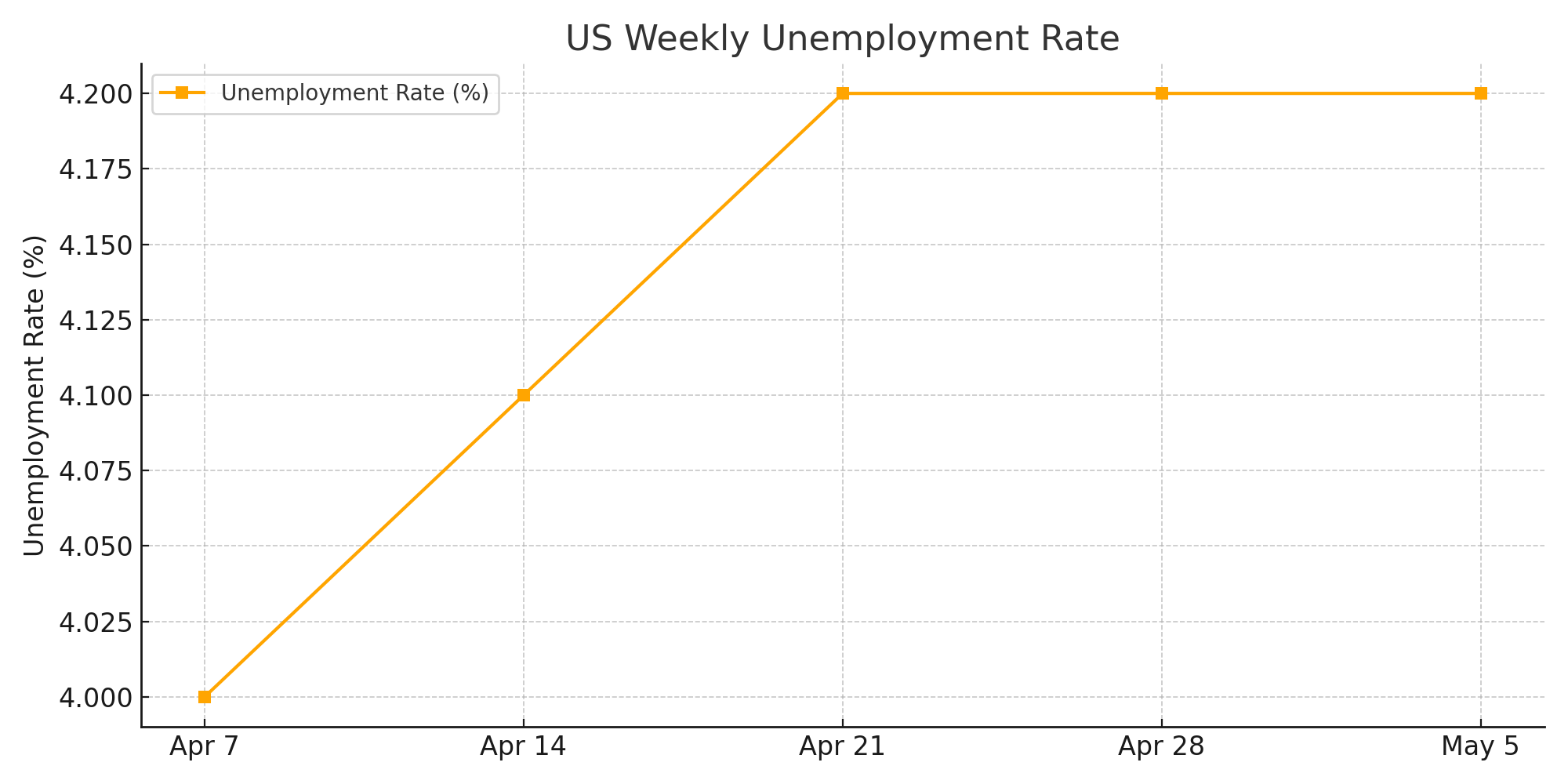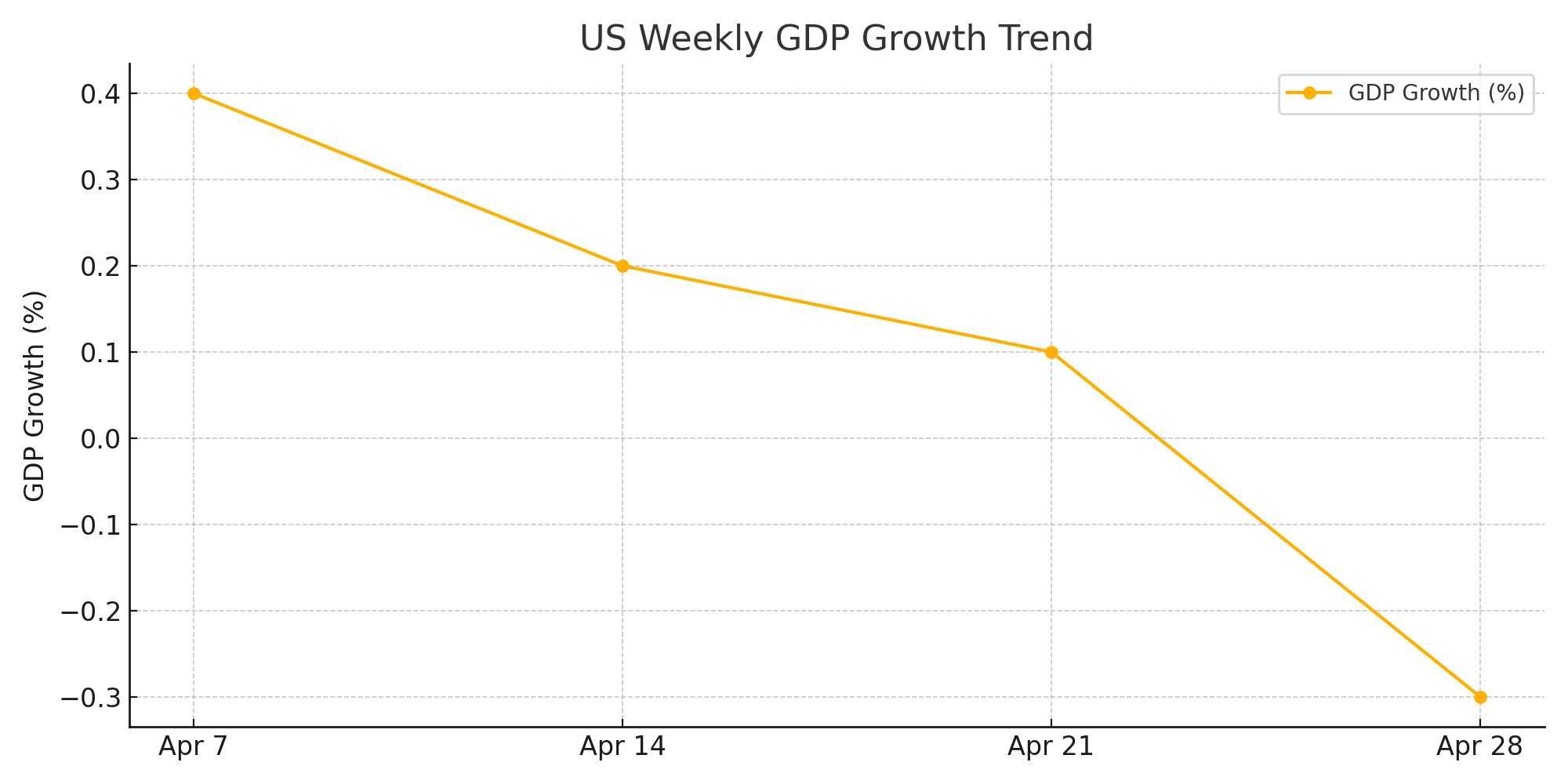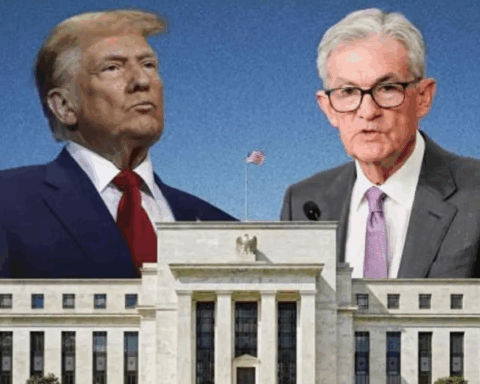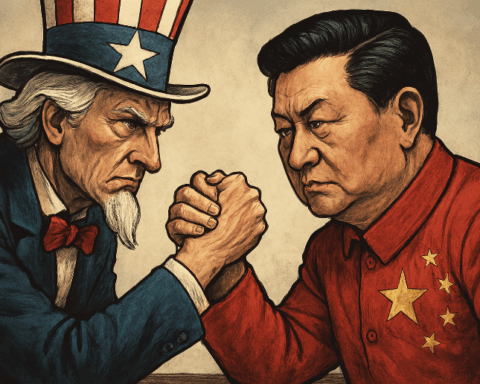By The Take Editorial — May 5, 2025
While spring should signal growth, the U.S. economy has shown signs of stress this past week, marked by contracting GDP, nervous consumers, and mixed signals from the labor market. Meanwhile, New York City seems to be resisting national headwinds—at least for now.
A Shrinking GDP, A Growing Problem
The first quarter of 2025 ended with a concerning figure: the U.S. economy shrank by 0.3%, the worst quarterly performance since 2022. Economists largely blame this on President Trump’s newly imposed trade tariffs, which spurred a spike in preemptive imports and choked net exports.
The economic engine is still running, but it’s beginning to sputter.

Consumers Are Losing Confidence
April’s Consumer Confidence Index fell to 86.0—its lowest point in five years. This isn’t just a number; it’s a signal. As inflation continues to bite and trade policy uncertainty looms, Americans are growing more cautious. That caution, in turn, could dampen consumer spending and slow recovery efforts.
Labor Market: Still Breathing, But Barely
Job growth remains positive, with 177,000 new jobs added in April. However, the three-month average has declined, and the unemployment rate held steady at 4.2%. It’s clear the job market hasn’t collapsed—but neither is it strong enough to counterbalance declining economic activity.

Wall Street Feels the Heat
After a nine-day winning streak, U.S. markets stumbled. The S&P 500 dropped by 0.6%, Nasdaq by 0.7%, and the Dow Jones by 0.2%, fueled by investor anxiety over tariffs and softening economic indicators.
New York City: Beating the National Trend?
Against the backdrop of national volatility, New York City showed signs of resilience. Employment rose for the third consecutive month, with unemployment dropping to 5.1%. Office vacancies continued to fall, and public transportation usage is climbing—suggesting increased mobility and worker confidence.
Meanwhile, the housing market remains hot. NYC’s home price index reached 327 in February, a 3.3% rise from last year, reflecting strong demand in the city’s core neighborhoods.
Conclusion: Parallel Realities
While the broader U.S. economy tightens, NYC is—in the short term—holding its ground. But make no mistake: if national conditions deteriorate further, even the Big Apple won’t be immune. For now, the city marches forward, even as the country stumbles.
- Tension Between Donald Trump and Elon Musk: Is a Major Crisis Beginning in the American System? - June 6, 2025
- Harvard Faces Federal Funding Freeze Over Alleged “Disrespect to the Nation,” Says McMahon - May 6, 2025
- Tariffs, Troubles, and Transition: A Tumultuous Week for the U.S. and NYC Economy - May 6, 2025










